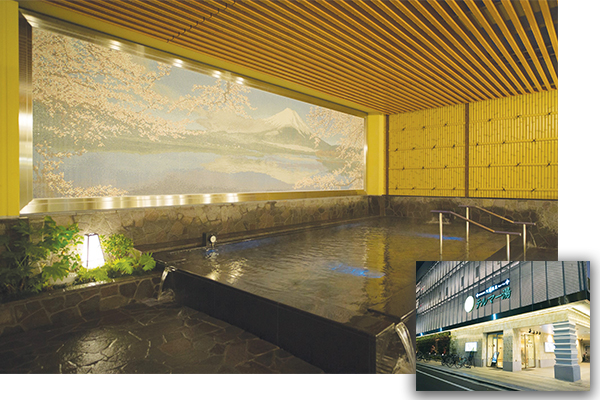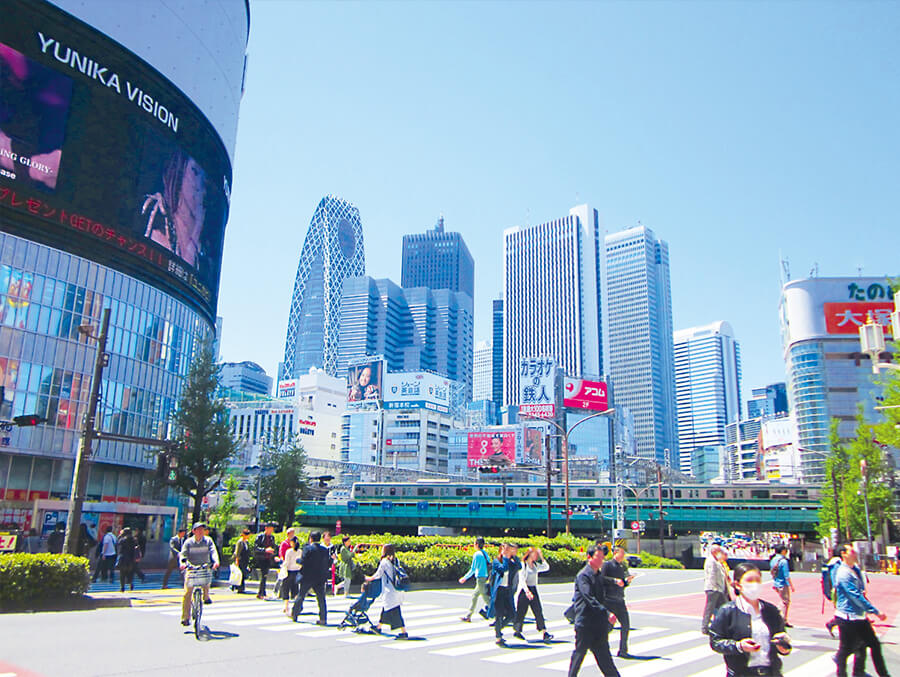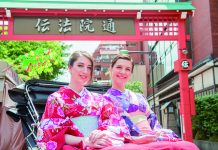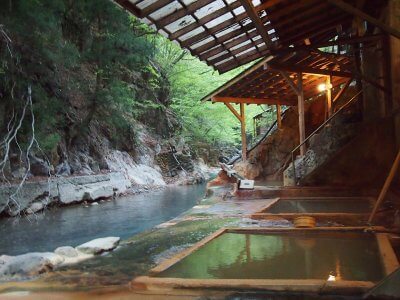
How to Make the Best of 3 Hours in Tokyo
It is the last day of your trip and you have three hours left before departing for the airport. Don’t know what to do with the time? WAttention did the homework for you. Here is a three-hour itinerary that will leave you entertained, refreshed and with lots of memories of Japan!
Shinjuku 新宿
An average of 3.47 million people use Shinjuku Station every day, making it the world’s busiest station according to the Guinness World Records. Apart from being the place where JR lines, private lines and subway lines converge, Shinjuku is also known as the administrative center of Tokyo due to the presence of the majestic Tokyo Metropolitan Government Building. You will have no trouble finding fancy restaurants and fun entertainment in this town which never sleeps. Visiting Shinjuku will definitely make your trip more enjoyable and memorable.
![]() Shinjuku Expressway Bus Terminal バスタ新宿 / Shinjuku Service Center
Shinjuku Expressway Bus Terminal バスタ新宿 / Shinjuku Service Center
Although Shinjuku Expressway Bus Terminal is a transportation hub for express buses heading all over Japan, it also has a variety of restaurants offering a satisfying choice of food and clothes shops where you can kill time before your departure. If you have trouble finding a coin locker, the Shinjuku Service Counter on the third floor is there to help, offering luggage delivery and storage services. After stowing away your luggage, it’s time to stroll around and enjoy the last three hours of your trip in Tokyo.

Hours: 6:30-23:00
Access: JR Shinjuku Station South Exit
Address: Located inside the Tourist Information Center Tokyo at the third floor of Shinjuku Expressway Bus Terminal. 5-24-55 Sendagaya, Shibuya.
URL:http://www.sagawa-exp.co.jp/ttk/english/servicecenter/basta.html
![]()


Hours: 9:30-23:00 (the South Observation Deck is open until 17:30 and the North Observation Deck is open until 23:00)
Access: 10 minutes’ walk from JR Shinjuku Station West Gate Exit. Take the elevator headed for the observatories on the first floor of the first building after arrival.
![]()
![]()
One of the must-dos in Tokyo is to take in the city’s aweinspiring, magnificent skyline. Tokyo Skytree and Tokyo Tower both offer great views but Tokyo Metropolitan Government Building is the place where you can enjoy the city’s horizon for free. Measuring 202 meters in height, the observatory decks offer a glimpse of Mt Fuji on a clear day between December and February. It might be a good idea to wave goodbye to the iconic mountain before departure!
Address: 2-8-1 Nishi Shinjuku, Shinjuku
URL:http://www.yokoso.metro.tokyo.jp/index.html (Japanese)
![]()
![]()
![]()
![]()
![]()
![]()
Established over 100 years ago, this park was an Imperial garden before being opened to the public following World War II. Shinjuku Gyoen combines three styles of garden: French Formal, English Landscape and Japanese Traditional. It is a marvel of the perfect blend of Japanese and Western aesthetics and really worth a visit. From cherry blossoms in spring to the soft greens of summer, Shinjuku Gyoen is an ideal place to enjoy the change of seasons.


Admission: Infants free of charge, elementary and junior high school students 50 Yen, adults 200 Yen
Address: 11 Naito-machi, Shinjuku
URL: http://fng.or.jp/shinjuku/ (Japanese)
![]()
![]()
![]()
![]()
![]()


![]()
![]()
Hanazono Shrine was known as the protector of the district long before Tokugawa Ieyasu’s Edo Period. Before its relocation, the historic shrine was housed at the site of today’s Isetan Shinjuku Department Store. Due to a stage being built inside during reconstruction after a fire, entertainment shows and traditional dances began to take place here in the Edo Period. The shrine is a popular place to pray for good business and prosperity. Why not try your luck here?
Access: 7 minutes’ walk from JR Shinjuku Station East Exit
Address: 5-17-3 Shinjuku, Shinjuku
URL: http://hanazono-jinja.or.jp/ (Japanese)
![]()
![]()
![]()
![]()
![]()
![]()
Enjoy Izu’s Jindai-no-yu natural hot spring right in the bustling heart of Shinjuku. This is a great place to relax the mind and body for travelers. Known as the beautification spring, the mild water is high in quality and can soften the skin. There are six other relaxing facilities including carbonic acid bath and sauna to choose from. Not a bad idea to soak in before flying off.


Access: 9 minutes’ walk from JR Shinjuku Station East Exit
URL: http://thermae-yu.jp/ (Japanese)
![]()
![]()
![]()
![]()
![]()


Hours: 10:30-21:00
Admission: Free for children under 3, 800 Yen for 12 and under, 1,800 Yen for adults
Access: 8 minutes’ walk from JR Shinjuku Station East Exit
![]()
![]()
What is the first thing that comes to mind when you think of Japan? Many people associate Japan with samurai, a culture that is not only confined to history books but still alive in modern Japan. The Samurai Museum introduces the authentic samurai spirit through a display of relics, armors and all sorts of items. A free 60 to 90 minute guided tour is recommended for those with more time. Put on a samurai helmet and costume for a photo shoot and get blown away by a reenactment of a sword fight.
Address: 2-25-6 Kabukicho, Shinjuku
Url: http://www.samuraimuseum.jp/en/index.html
![]()
![]()
![]()
![]()
![]()
![]()
To celebrate the 60th anniversary of Godzilla’s debut , the Shinjuku Toho Building has installed the giant head of this monster on its outdoor terrace. Passers by on the ground can take a picture of Godzilla breaking its way through high-rise buildings—a nice souvenir to look back on!
Access: 5 minutes’ walk from JR Shinjuku Station East Exit
Address: 1-19-1 Kabukicho, Shinjuku


![]()
![]()
![]()
![]()
![]()


Access: 6 minutes’ walk from JR Shinjuku Station East Exit or West Exit
URL: http://shinjuku-omoide.com
![]()
![]()
Shinjuku Omoide Yokocho, a bunch of old, low story buildings occupying the prime location of Shinjuku, is the best place to observe the life of office workers in Japan as they come here after work for a drink to unwind. It is a trip down memory lane for many because of the well-preserved atmosphere of the Showa Period (1926-1989). The eateries and bars here provide mouthwatering cuisine and a place of communication between travelers and locals.
 0
0























